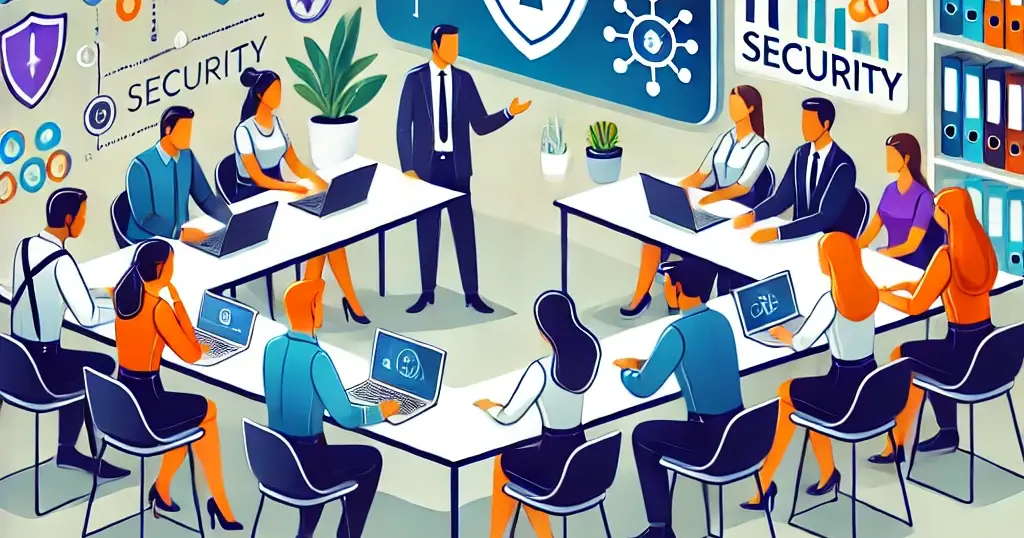In today’s fast-paced digital world, businesses need tools that can keep up with their ever-changing demands. From boosting productivity to ensuring top-notch security, having a comprehensive solution is no longer a luxury—it’s a necessity. Microsoft 365 Business Premium is a standout platform that helps businesses flourish. By combining familiar applications with advanced features, it enables organisations to streamline operations, collaborate effectively, and protect their data.
Whether you’re just starting to explore Microsoft 365 or need expert guidance, CK Computer Solutions – Managed IT Services provider in Dublin – can help set up and install the platform, ensuring a seamless transition for your business
Better Collaboration and Communication
Clear communication and seamless collaboration are the heart of any successful business. Microsoft 365 Business Premium creates an ideal environment for teams to work together effortlessly.
With Microsoft Teams, employees can collaborate in real time through video calls, instant messaging, and shared workspaces. Whether your team is in the same office or spread across the globe, Teams breaks down communication barriers.
Outlook takes email communication to the next level with advanced features, including customisable inbox organisation and integrated calendars, ensuring no message or meeting is overlooked.
For file sharing and storage, OneDrive offers a secure, easily accessible solution. Employees can save, share, and work on files from anywhere, so productivity is never tied to a specific location.
To ensure your Microsoft 365 environment is optimised for your unique business needs, CK Computer Solutions provides tailored solutions to enhance collaboration and efficiency.
Strong Security Features
With cyber threats becoming increasingly sophisticated, safeguarding your business data is crucial. Microsoft 365 Business Premium includes a suite of robust security features to give businesses peace of mind.
Advanced Threat Protection identifies and neutralises phishing attacks, malware, and other online threats before they cause harm. This proactive approach ensures your business stays ahead of attackers.
For sensitive information, tools like Information Protection help classify and secure data, ensuring compliance with regulations and preventing unauthorised access.
Multi-factor authentication (MFA) adds an extra layer of protection by requiring multiple forms of verification. Even if passwords are compromised, MFA keeps your accounts secure.
Partnering with CK Computer Solutions ensures your business is equipped with the right security configurations and ongoing support to protect your data effectively.
Productivity with Integrated Applications
Microsoft 365 Business Premium comes packed with tools to boost productivity, all without the need for additional software.
Core applications like Word, Excel, and PowerPoint remain essential for workplace efficiency. Regular updates ensure these tools stay ahead of the curve, helping employees work smarter.
For automating repetitive tasks, Power Automate simplifies workflows, saving time and effort. Coupled with SharePoint, teams can centralise resources, track projects, and improve collaboration.
Microsoft Viva, a newer addition, uses AI to provide insights that promote employee well-being and productivity. It identifies areas for improvement and helps businesses create a more engaging work environment.
Scalability and Cost Efficiency
A key advantage of Microsoft 365 Business Premium is its scalability. It’s designed to suit businesses of all sizes and grows alongside your organisation.
The subscription model provides predictable costs, making budgeting straightforward. You avoid the large upfront expenses of traditional software, while benefiting from continuous updates.
Flexible licensing options let businesses pick plans that suit their specific needs, ensuring they only pay for what they use. This flexibility makes it a great fit for startups, growing businesses, and established firms alike.
For businesses in Dublin and beyond, CK Computer Solutions offers cost-efficient setup and support, helping you maximise the value of your Microsoft 365 investment.

Easier IT Management
Managing IT infrastructure can be a challenge, but Microsoft 365 Business Premium simplifies it.
The centralised admin console gives IT teams a single dashboard to manage users, devices, and settings. This streamlines operations, reduces downtime, and ensures consistency across your organisation.
Automated updates keep all applications and systems current, avoiding compatibility issues and reducing security risks.
And if something does go wrong, dedicated support is available to minimise disruptions and get things back on track quickly.
CK Computer Solutions can handle the setup, ongoing management, and troubleshooting of your Microsoft 365 environment, allowing your team to focus on core business objectives.
Conclusion
Microsoft 365 Business Premium isn’t just a software package—it’s a comprehensive solution for modern businesses. By improving collaboration, strengthening security, and simplifying operations, it helps organisations achieve their goals with confidence. Choosing this platform isn’t just an upgrade; it’s a strategic step towards future-proofing your business in an ever-evolving digital world.
For expert installation and ongoing support in Dublin, CK Computer Solutions – Managed IT Services provider – is your trusted partner. Let us help you unlock the full potential of Microsoft 365 Business Premium.


